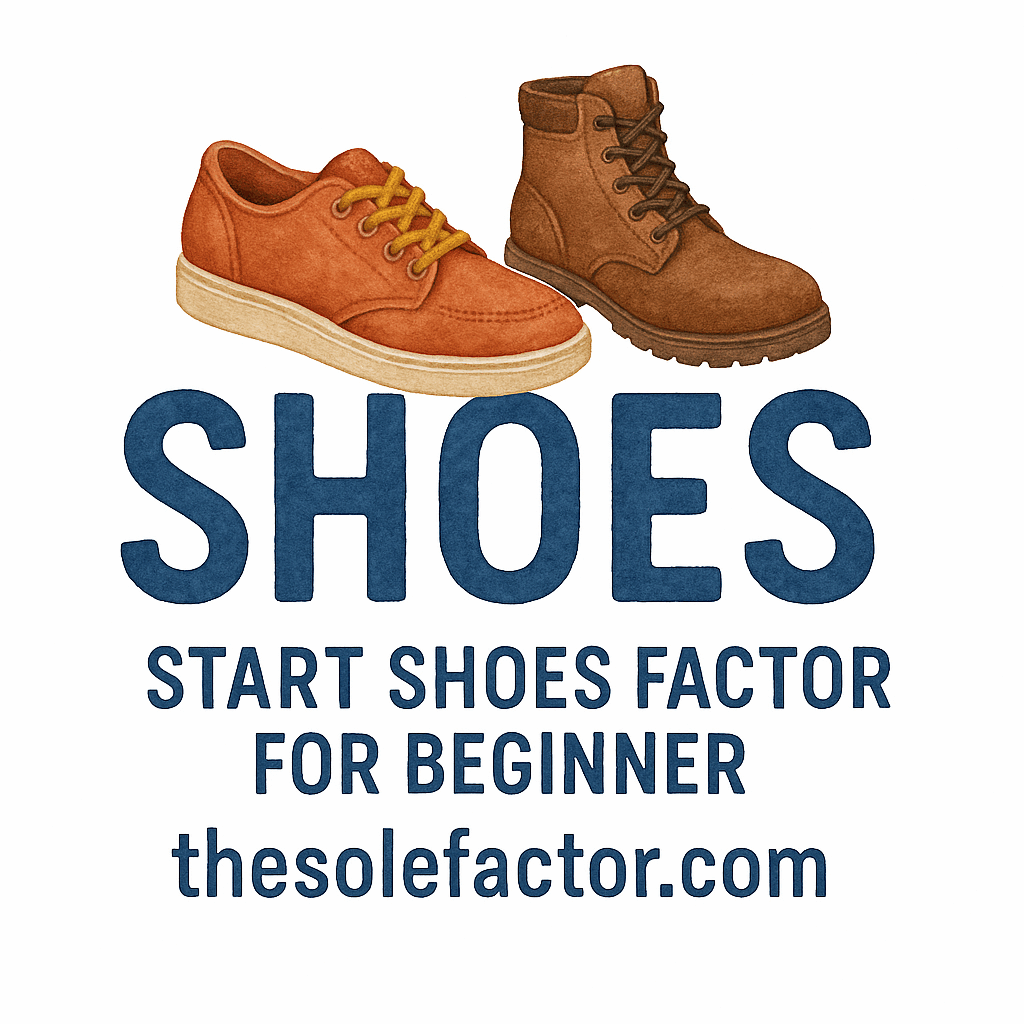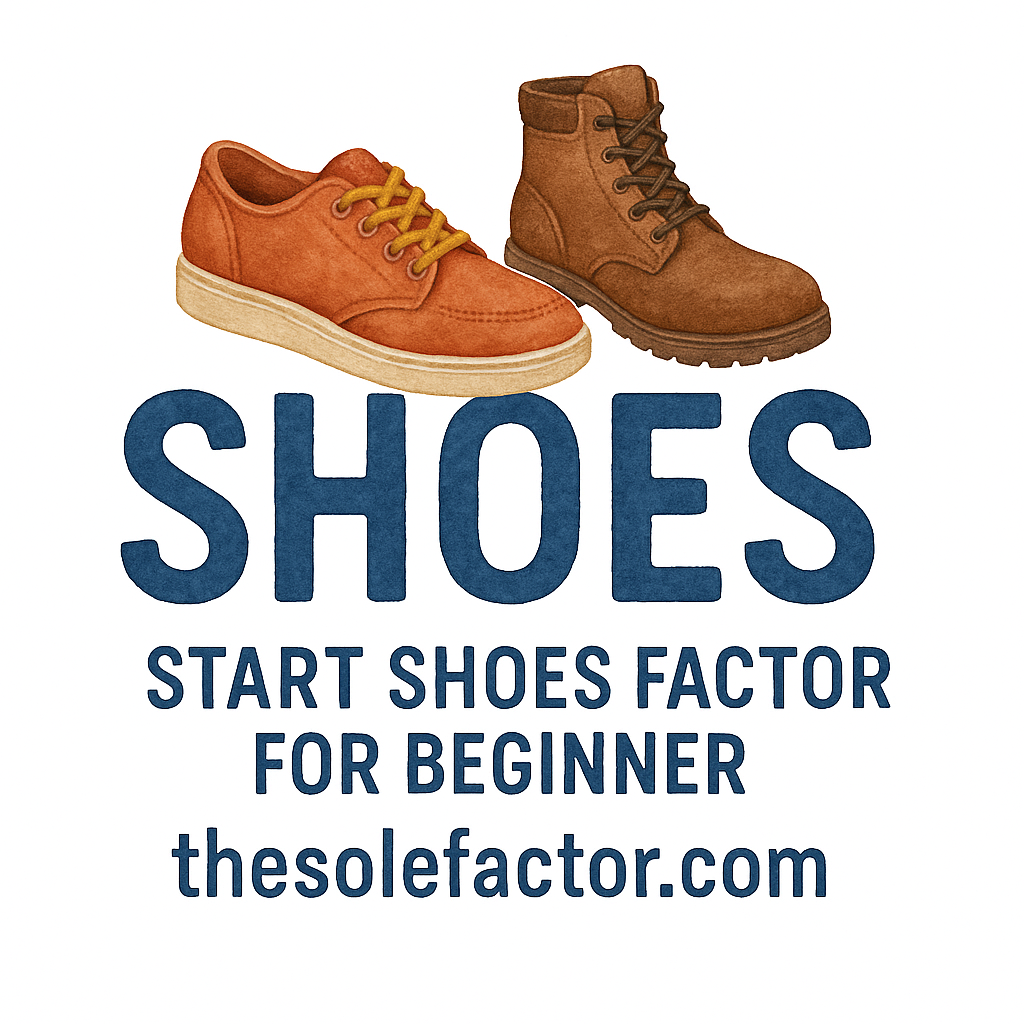Introduction: The Growth of the Footwear Industry
The footwear industry is a thriving sector, with the global demand for shoes always on the rise. Whether it’s fashion-forward sneakers or classic formal shoes, people are always looking for quality footwear. Starting a shoe factory may seem like an exciting venture, but it’s essential to understand the key elements before diving into the process.
In this article, we’ll explore 10 vital things you must know before opening a shoe factory. From understanding the market and sourcing materials to navigating legal requirements, this guide will prepare you to take on the footwear manufacturing world.
H2: 1. Understanding the Footwear Market
The first step to starting your shoe factory is to thoroughly understand the footwear market. It’s crucial to research and analyze the market trends, consumer preferences, and competition.
H3: Target Audience
The type of shoes you plan to manufacture will determine your target audience. Are you focused on producing high-end fashion shoes, or will you cater to the mass market? Understanding your ideal customer base will guide every decision, from design to marketing.
H3: Competitor Analysis
By researching your competitors, you can identify gaps in the market that you can fill. Analyzing their marketing and branding strategies, pricing, and customer service approaches will help you differentiate your product. A competitor analysis can also help you avoid common pitfalls others have faced in the industry.
H2: 2. Choosing the Right Type of Shoes to Manufacture
With countless types of shoes on the market, deciding what kind to produce is crucial. Whether you want to focus on athletic shoes, luxury footwear, or casual styles, it’s important to evaluate market demand and customer preferences.
H3: Market Demand for Specific Types of Shoes
Do thorough research into the shoes design trends to find out what types of shoes are trending. What is the current demand for sports shoes, and how can you align your offerings to meet the needs of the market?
H2: 3. Setting Up Your Shoe Factory Location
The location of your factory plays a significant role in your business’s success. Not only will it affect your production costs, but it will also influence the supply chain and distribution.
H3: Proximity to Suppliers and Markets
Consider setting up your factory close to suppliers and major markets. This will reduce logistics costs and make it easier to source materials for production. You’ll also have quicker access to customers, whether local or international.
H3: Costs Involved in Setting Up the Factory
Before you break ground, it’s vital to assess the costs involved in setting up the factory. This includes real estate, machinery, materials, and the initial labor costs. Make sure you have a clear financial plan to cover these expenses without overextending your budget.
H2: 4. Legal and Regulatory Requirements
Before you start manufacturing shoes, you must navigate a variety of legal and regulatory requirements. Complying with labor laws, safety regulations, and import/export rules is critical to ensure smooth operations.
H3: Registering Your Business
To run your factory legally, you need to register your business with local authorities. This process involves obtaining necessary permits and licenses, ensuring your factory meets safety standards, and adhering to environmental guidelines.
H3: Labor Laws & Worker Safety
As you grow your factory, it’s crucial to comply with labor laws, including workers’ rights and workplace safety regulations. Ensure that your production line meets health and safety standards, and provide proper training for your staff.
H2: 5. Sourcing Materials for Shoe Production
The quality of materials you use directly impacts the finished product. Sourcing high-quality materials like leather, rubber, and synthetic fabrics is essential for creating durable and attractive footwear.
H3: Building Relationships with Suppliers
Develop strong supplier relationships to ensure consistent access to high-quality materials at competitive prices. Partnering with reliable suppliers is vital for maintaining smooth production processes.
H3: Quality Control in Material Sourcing
Implement a strict quality control system when sourcing materials. Checking the quality of each batch ensures that your shoes meet your standards and prevents costly mistakes later in production.
H2: 6. Equipment and Technology for Shoe Manufacturing
A shoe factory relies on various types of equipment, ranging from stitching machines to molding presses. Technology plays a significant role in modern shoe manufacturing, and having the right tools is critical.
H3: Shoe Making Machines
From cutting machines to stitching machines, you’ll need specialized equipment to produce shoes. You must ensure that your machinery is capable of handling high-volume production while maintaining quality. Explore more about essential production equipment to make your factory run efficiently.

H3: Automation and Technology in Shoe Factories
Incorporating automation into your factory can reduce labor costs and improve production speed. Automated machinery can also increase precision, allowing your factory to scale more effectively.
H2: 7. Building a Skilled Workforce
A factory is only as good as the people running it. Recruiting skilled workers and providing ongoing training is crucial to maintaining production efficiency.
H3: Training and Skill Development
To maintain high standards, ensure that your team is constantly upskilled in the latest techniques. Investing in training programs will pay off in the long term as it increases worker productivity and reduces mistakes.
H3: Creating a Positive Work Environment
Employees thrive in a positive work environment. Offering incentives, competitive salaries, and a safe working space will help retain skilled workers and reduce turnover. A motivated workforce is the key to increasing production output.
H2: 8. Branding and Marketing Your Shoe Brand
Once your shoes are being produced, it’s time to market your product. Building a strong brand identity and promoting your shoes effectively are key to growing your factory.
H3: Digital Marketing for Shoes
Today, digital marketing is crucial for reaching a wide audience. Use social media platforms like Instagram and Facebook to showcase your shoes and build your brand. Ensure your website is optimized to showcase your products and encourage online sales.
H3: Collaborations and Influencer Marketing
Partner with influencers in the footwear and fashion industry to help promote your brand. Collaborating with influencers is a great way to gain exposure and connect with your target audience, especially if you’re targeting a younger demographic.
H2: 9. Managing Financials and Budgets
Effective financial management is the backbone of a successful shoe manufacturing business. Without proper budgeting, you could find yourself in debt or unable to scale.
H3: Managing Cash Flow
Ensure that you have a reliable cash flow management system in place. Keep track of your revenue and expenses, and plan for any unforeseen costs. Budgeting effectively will help you maintain profitability.
H3: Cost-Effective Strategies
One of the best ways to maximize your profits is by reducing production costs. This can be done by streamlining operations, automating processes, or finding more affordable materials that don’t compromise on quality.
H2: 10. Scaling Your Shoe Business
As your business grows, scaling becomes essential. Whether it’s expanding your product line or entering new markets, having a scalable business model will ensure long-term success.
H3: Expanding Your Product Range
To appeal to a larger audience, consider diversifying your product range. You could explore new shoe designs, offer different sizes, or introduce complementary products like shoe accessories.
H3: Global Expansion and Exporting
If your local market is thriving, it might be time to consider global expansion. Look into exporting your products to international markets, which can open up new opportunities for growth.
H2: Conclusion
Opening a shoe factory is a complex, yet rewarding process. From understanding the market to securing the right location, sourcing materials, and setting up the necessary equipment, each step requires careful thought and preparation. Keep these 10 key points in mind as you navigate the process of starting your shoe manufacturing business, and you’ll be well on your way to success.
H2: FAQs
- What is the most profitable type of shoe to manufacture?
- How much capital is required to start a shoe factory?
- What are the most common challenges in the shoe manufacturing industry?
- Do I need special certifications to open a shoe factory?
- How can I reduce production costs without compromising quality?
- What marketing strategies work best for shoe brands?
- Is it better to focus on local or international markets when starting?


